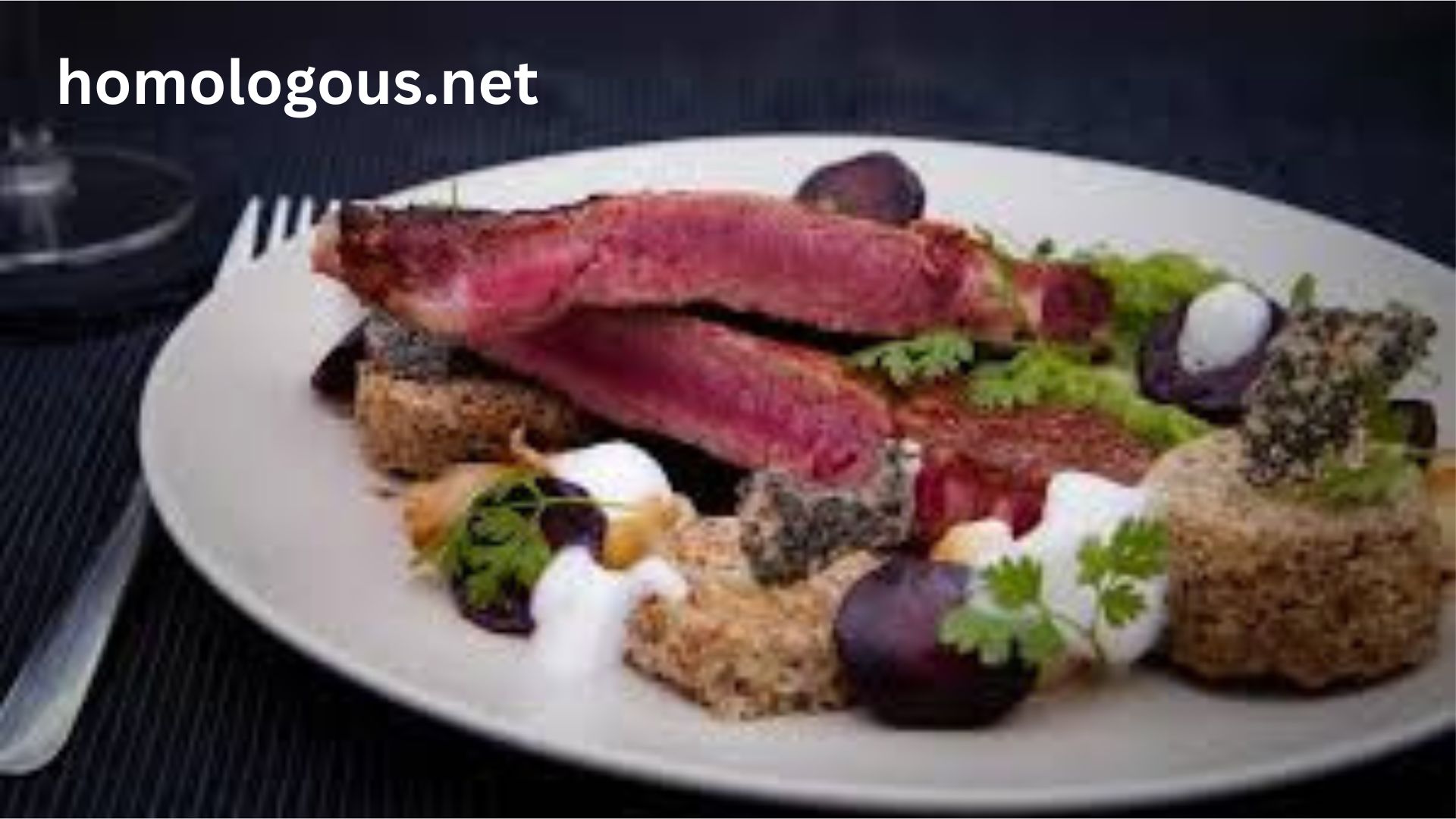On dinner tables, and both family barbecues and at the finest in-town restaurants, steak has always been a favorite. However, besides its high taste and an ability to be versatile, steak also creates the interest in its nutritional content. Many people want to know: how much protein in steak, and does it make a significant difference in a healthy diet?
Protein is a very crucial macronutrient in the body. It develops and maintains muscles, helps hormones and enzymes and can even reinforce your immune system. Protein intake is frequently monitored in athletes, bodybuilders, or any other person wishing to remain fit. Steak is a good option as a hearty amount of protein is provided in each cut, yet the specific amount can be determined by size, preparation and type of steak. This article goes into in-depth details of the protein content in steak, compares the cuts, and how steak fits in other diets. This guide assists you to see the facts straight, and in a practical manner whether you are attempting to pack on muscle, trim down or merely enhance your diet.
Key Takeaways: How Much Protein in Steak
- Protein content in steak depends on the cut, size and cooking method.
- Steak is a complete protein and therefore a high quality supplier.
- Moderate consumption of steak could help build muscle mass and health.
Protein Content of various steak cuts
When asking how much protein in steak, the answer depends largely on the type of cut. The leaner cuts are typically higher in protein and lower in fat whereas the fattier ones contain lower in protein but more caloric. The following are the breakdowns of popular cuts per serving (3oz., 85 grams) cooked:
| Steak Cut | Protein (grams) | Calories | Fat (grams) |
| Sirloin | 26g | 210 | 9g |
| Ribeye | 23g | 240 | 18g |
| Filet Mignon | 22g | 220 | 12g |
| T-Bone | 25g | 250 | 17g |
| Flank Steak | 27g | 200 | 8g |
Effects of Cooking on Steak Protein.
The way in which steak is cooked affects its nutrition. Although the protein content remains relatively constant, the loss of water and fat during cooking can alter the weight and the calorie content. The popular techniques that are used to preserve protein and minimize fat are grilling, broiling, and pan-searing. How Much Protein in Steak, check it.
For example:
* Grilled Sirloin (3 oz) – contains approximately 26g protein, 210 calories.
* Pan-Fried Sirloin (3 oz) – 25g of protein, 220 calories.
* Slow-Cooked Sirloin (3 oz)- 24g protein, 200 calories.
Grilling is preferred due to fat-draining cooking techniques as an option of leaner diet. In the meantime, pan-searing in oil or butter may add additional calories and fat but not protein. Personal trainers usually suggest that clients grill or bake steak when they watch the macronutrients closely. That way you are sure of the amount of protein you are eating in steak, not any backdoor calories.
Tip: steak should not be over cooked because the extremely high heat can slightly decrease the number of available amino acids but it is not significant.
Steak vs. Other Protein Sources
Another way to understand how much protein in steak is by comparing it with other common protein sources. This assists in placing steak on a daily diet. You will notice that chicken breast is a few calories lower in protein and salmon will also provide healthy fats in addition to is protein-rich. Considering the lentils which are plant-based provide decent protein but do not provide all the essential amino acids in a single portion. Steak is a complete protein source, and thus can be useful in muscle recovery and a proper diet.
| Food (3 oz cooked) | Protein (grams) | Calories |
| Steak (Sirloin) | 26g | 210 |
| Chicken Breast | 27g | 140 |
| Salmon | 22g | 180 |
| Lentils (1 cup cooked) | 18g | 230 |
| Eggs (2 large) | 12g | 150 |
individuals who want to confuse their protein sources can switch between steak and chicken, fish and plant proteins so that there is variety and nutrient diversity.
The use of Steak Protein in building muscles and weight loss
Protein is at the center of activities related to fitness. When you ask yourself how much protein is in steak, it is often in reference to muscle building, fat loss or recovery.
* To Build Muscle: Steak contains all the nine essential amino acids, which are essential to repair muscle after physical activity. Lean steak is consumed by many athletes who have been training.
* To lose weight: The moderate calorie content of lean cuts with a high protein content will help you feel fuller longer, resulting in fewer snacks and calories.
* In Balanced Diets: Steak is a vegetable and grain Foods and healthy fat match which form nutritious balance dishes.
An example: After training, a body builder may consume 8 ounces of sirloin (~52g protein) so that they cover daily protein requirements to grow. Conversely, a person on a weight loss diet can have a 4-ounce flank steak (approximately 36g of protein) and roasted vegetables to make a filling and low calorie dinner.
The USDA recommends that adults should consume 46-56 grams of protein per day, although athletes tend to seek more (1.2-2.0 grams per kilogram of body weight). Understanding the amount of protein in steak will help to cut portions to satisfy these needs. Follow for How Much Protein in Steak.
Health and Expert Advice
Steak is rich in proteins, however, it is better to consume it moderately. Research indicates that the regular intake of high levels of red meat particularly processed ones can predispose a person to health hazards like heart disease or colorectal cancer. Balanced portions and lean cuts are a must.
Nutritionists can recommend often:
* Restricting consumption of red meat to 2-3 times per week.
* Making beef a greater source of omega-3 by using grass-fed.
* Replacing steak food with vegetables and whole grains high in fiber.
According to Harvard School of Public Health, moderate consumption of unprocessed red meat, in combination with healthy lifestyle habits is not accompanied by significant health issues. Steak is also a good source of protein in a balanced diet.
Citation source: Harvard T.H. Chan School of Public Health – Red Meat and Health
Internal referral suggestion: Connect your article on “Buffalo Bills vs Kansas City Chiefs Match Player Stats and Analysis to an angle of lifestyle or sports related. Steak is also not only a tasty dish, but it is also a great source of protein that can help propel your health and fitness life. A portion of steak may have a lot of protein, depending on your cut, size, and cooking technique, although averaging around 3-ounces of steak a portion may contain 22-27 grams of good-protein. This is why steak is a great muscle-building food, muscle recovery food, and meal satisfaction food. Are you cheking this How Much Protein in Steak?
Still, balance is essential. Eat vegetables, whole grains and other sources of protein with pair steak to make a balanced diet. Eat smaller cuts more frequently and eat bigger cuts sparingly. In this way you will have the best of both, flavor and nutrition. After all, being aware of what amount of protein in steak would help you to make smarter food choices that would help you achieve your ambitions, whether that would be building muscle, losing weight or just having a healthier lifestyle.
FAQs
Q1: What is the protein content of a 6oz steak?
A: 6-ounce steak has approximately 44-52 grams of protein, which varies with the cut.
Q2: Which has more protein beef or chicken?
A: They are both equally good sources, yet chicken breast is a little higher in protein calories, whereas the steak has some extra nutrients such as iron and zinc.
Q3: Does the cooking of steak decrease protein?
A: Protein is relatively resistant to cooking, but loss of water may cause protein to look more concentrated.
Q4: What is the most proteinous steak cut?
A: Some of the highest are the flank steak and sirloin with approximately 26-27 grams per 3-ounce portion.
Q5: Does the consumption of steak assist in weight loss?
A: yes, lean steak can assist in losing weight because it is a filling protein and can help to reduce hunger, however, portion control and balance are also essential.


